Visual Cues WHY SEEING THE PUTT DOESN'T MEAN YOU SEE THE PUTT
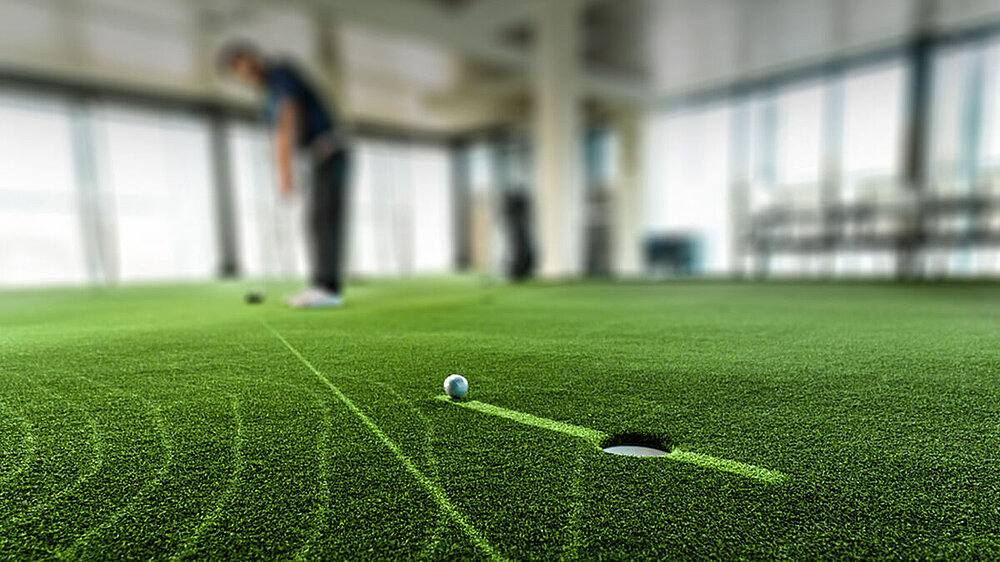

One of the most common reactions people have when they see PuttView for the first time is: “That’s cheating”. How couldn’t it be? With it, you can visualize all aspects of a putt. You can see the actual path the ball will travel on and also where you need to aim at. No more guessing. All you need to do is hit down that line, and the ball will go into the hole. Easy! Unfortunately, it is not quite that simple. Because seeing the putt, doesn’t mean you see the putt. So, let’s take a deeper dive into that.
Visualization is highly individual. If you go outside and ask 10 people to describe the picture that comes into their mind when thinking about a bird, you will end up with 10 different answers. While you will probably be able to agree on a creature that has wings, chirps, and has a beak, the more you go into detail, the more the descriptions will vary from each other. Something similar is going on when talking about a putt. With the added hurdle, that most people have never actually seen a putt. This makes putting incredibly difficult to teach and practice. Because simply explaining, what you believe the putt should look like, doesn’t mean that the other person will be able to grasp the same concept. In general, there are two methods of visualizing a putt. Either you visualize where you need to aim at, or you see the actual path the ball will travel. Within our PuttView system, those two lines are called Aiming Line and Ideal Line. Getting back to the analogy of the bird, those two concepts are like agreeing on wings and a beak for birds.
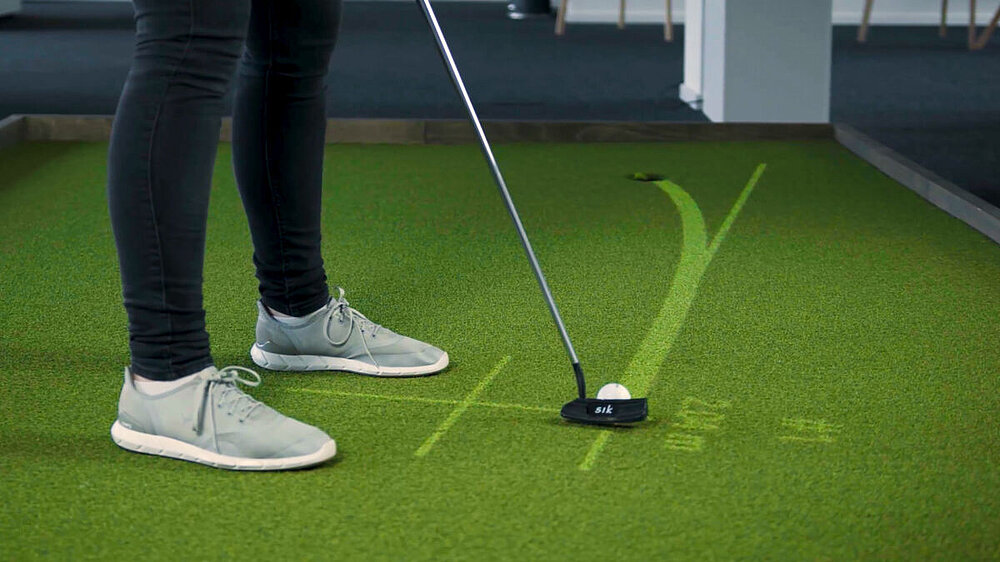
Building an accurate picture
The ground rules of putting are nonnegotiable. Because they are based on physics. There is no guessing on what happens to the ball on its way to the hole. How you can ensure that it takes that path, is a different topic and just because you are seeing the Ideal and Aiming Line on a PuttView system, won’t mean you are holing out every putt you face. One of the reasons for that is that seeing the lines still doesn’t mean you actually see the putt the way you perceive it. Imagine looking at a picture of a bird. Just because you see a picture of it and can agree on the fact that it is a bird, doesn’t mean you would have pictured the bird this way on your own. Getting back to putting this means while you are able to identify that you are seeing a putt, you might still visualize it differently. And this is where the fun begins. There are almost endless ways for people to visualize a putt. Some like to see the entire Aiming Line, others rather pick a small spot in front of the ball to hit over, etc. But how can you know, what works best for you and which pictures you have in your mind are simply in there because someone told you this is how you should visualize a putt?
To answer this question and emphasize the importance of visual cues, I have come up with a “study”. As a player, the most important thing is holing more putts. For the study, I, therefore, decided to go with a 6ft right-to-left breaking putt. At this distance amateurs have a decent make rate, while still leaving room for improvement and a measurable effect. To make the effect of the visual cues apparent, players had to hit 10 putts per visual cue.
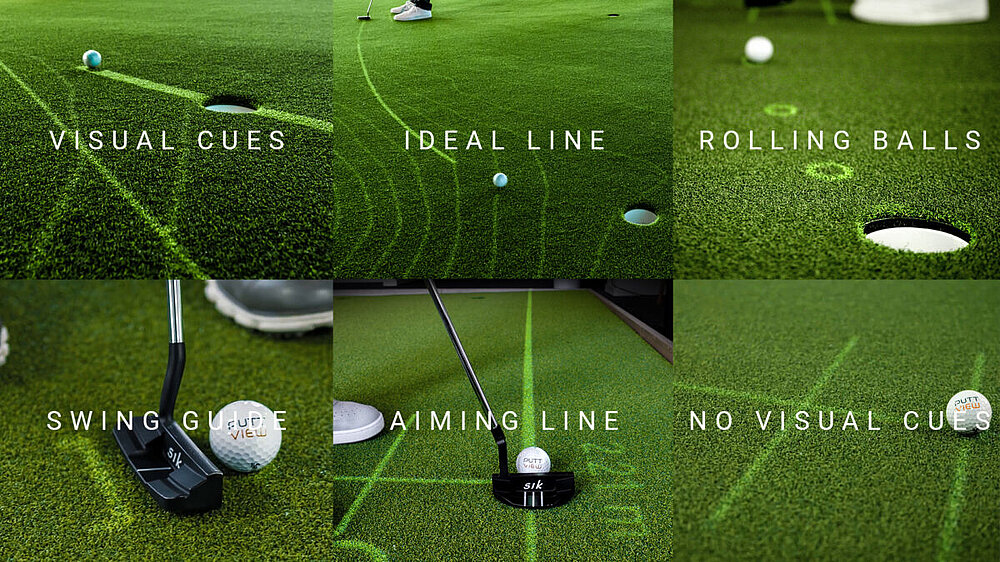
Due to the wide range of adjustable visual cues that PuttView offers, it is not possible to showcase every combination and variation of the available cues. In total, I picked 10 visual cues that were played in random order, and for cross-reference, one round of no visual support was played. Here is a list of all the visual cues that were played:
- Ideal Line
- Aiming Line
- Hole Entry Point (the point the ball is going to fall into the hole)
- Ideal Line first part (only the first part of the Ideal Line is shown)
- Ideal Line last part (only the last part of the Ideal Line is shown)
- Aiming Point (only the aiming point is shown behind the hole)
- Swingguide (a visual representation of the movement of the putter)
- Rolling Balls (animated points roll into the hole)
- Animated Ideal Line (instead of a static Ideal Line, the line keeps building up to the hole)
- Ideal Line + Aiming Line
- No visual cues
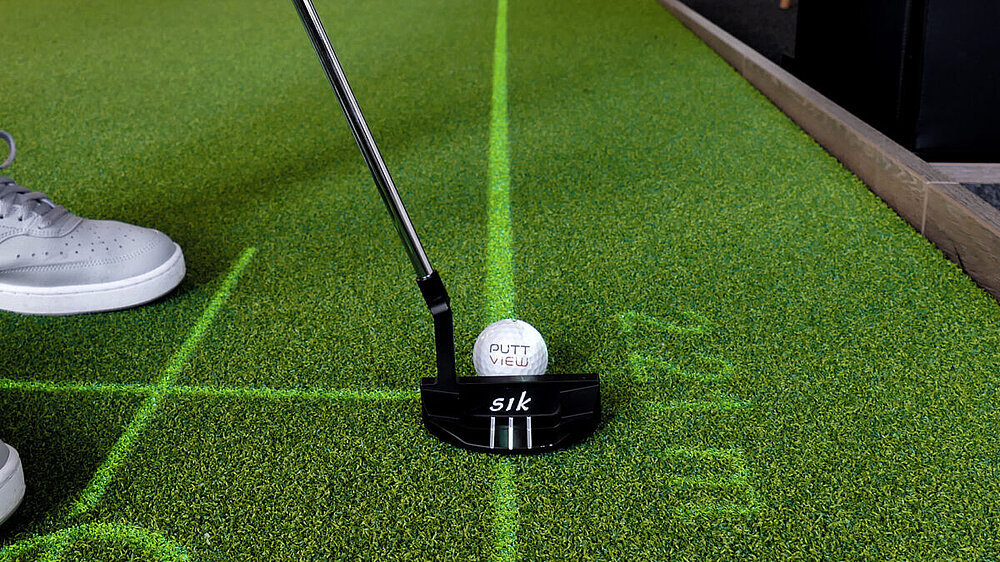
Prior to starting, I asked every participant how he or she thinks they visualize the putt. Two players said they see the curved line and two players answered they pick a spot to aim at. Player one, who had answered to see the curved line, added that he visualizes how the ball drops into the hole and rebuilds the rest of the putt back to the starting point. For that player, the best results came with Rolling Balls (10/10) and the Animated Ideal Line (9/10). Feeding into the player’s initial self-assessment and indicating that the player works best with dynamic visuals. Static visuals, such as the Aiming Point (5/10) or the last part of the Ideal Line (6/10), or the Hole Entry Point (5/10), underperformed and did not fit the mental picture the player had in mind.
The second curved line player noted that he generally doesn’t put too much thought into his putting but struggles with mostly leaving the ball below the hole. This players’ most successful visual cue was Hole Entry Point (9/10) and the first part of the Ideal Line (8/10). Throughout the study, it became apparent for the player that less is more. Animations such as Rolling Balls (1/10) or the Animated Ideal Line (3/10), that had helped player one tremendously, did not support player two. Even though both players do visualize the putt with the same general concept, they have fundamental differences in the way they perceive that concept.
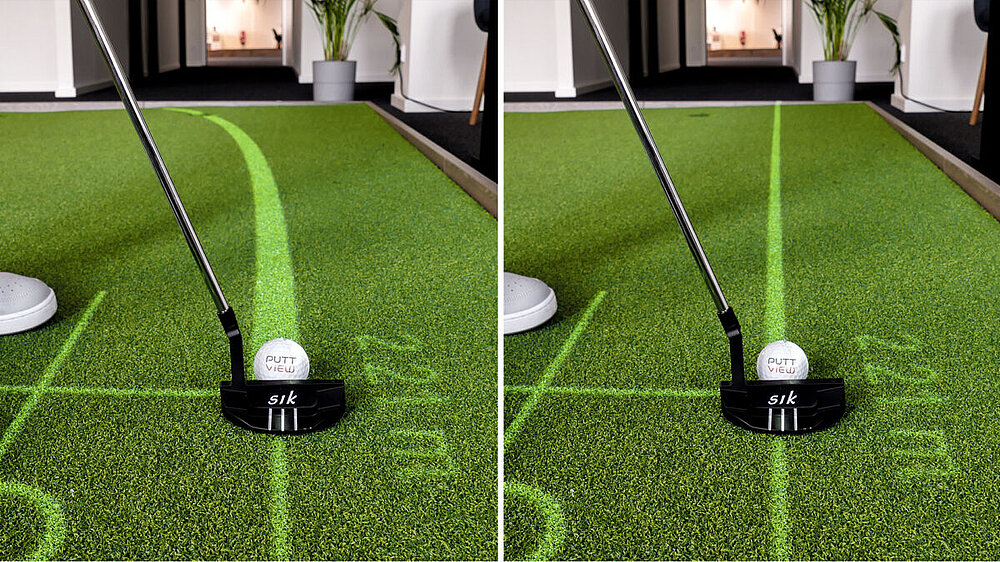
Player three categorized himself as a straight line thinker. Meaning, the player picks a spot to aim at, rather than seeing the actual path the ball will travel on. The best result for this player came with the Aiming Point (10/10) as well as the last part of the Ideal Line (9/10). While this result may look conflicting at first, as one visual cue supports straight line thinkers while the other supports a curved line approach, it is not. Just like for player two, less visual support is more for player three. The Swingguide (3/10) and the Animated Ideal Line (5/10) lead to the worst results for the player. Additionally, visual cues that were focused on the first part of the putt, such as the first part of the Ideal Line (6/10), also did not lead to increased performance. Leading to the conclusion, that this player should focus on whatever happens right around the hole, instead of trying to picture the entire putt. Furthermore, as the player felt more comfortable aligning to a point, rather than the curved line, the conclusion for player three is to focus on a spot behind the hole to aim at prior to hitting the ball.
The last player also categorized himself as a straight line thinker. Noting that this is how he learned to putt. The best result for player four came with Rolling Balls (9/10). Besides this visual cue, there were no major positive outbreaks within the varying visuals. However, the first part of the Ideal Line (3/10) and Aiming Point (2/10) underperformed significantly for that player. Indicating that the player needs more visual support than those cues offered as well as a stronger focus towards the hole. In general, the player performed better with the visuals supporting a curved line approach. In combination with the player’s own feel and feedback, the conclusion was drawn that he should focus more on a curved line approach as well as visualizing how the ball rolls to the hole.
Obviously, the study that was conducted is not representative, but it does show nicely, how important it is to know your personal preferences and cross-reference them with real results. First of all, it does matter if someone described a bird to you and this is the only way you can build a mental picture of a bird, or if you have seen various birds yourself and have a mental picture based on that. As mentioned above, most people have never seen a putt and base their predictions on someone else’s perception. Therefore, if you have never seen a putt before, and don’t own a PuttView System, try to map out the line the ball will travel on and also the point you need to aim at. Then ask yourself, which version feeds into your mental picture. Additionally, you can hit a couple of putts and try to feel which version feels more natural for you. Next, you can try to run different visuals in your mind. Use your own creativity while determining if you feel more comfortable by visualizing a point, a line, or a rolling ball. And lastly, cross-reference those ideas with results. That way, you can determine in which direction you should shift your focus during future putting practice. By following these steps, you will severely increase the efficiency of your putting practice, as well as build up confidence and hole more putts.